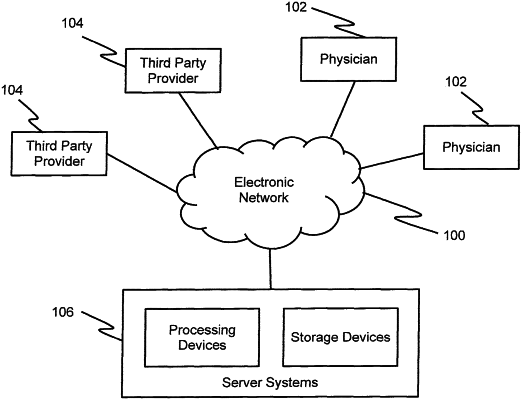| CPC A61B 5/026 (2013.01) [A61B 5/0022 (2013.01); A61B 5/02007 (2013.01); A61B 5/0205 (2013.01); A61B 5/021 (2013.01); A61B 5/107 (2013.01); A61B 5/14535 (2013.01); A61B 5/14546 (2013.01); A61B 5/7267 (2013.01); A61B 5/7278 (2013.01); A61B 5/7282 (2013.01); A61B 5/742 (2013.01); A61B 5/743 (2013.01); A61B 6/032 (2013.01); A61B 6/463 (2013.01); A61B 6/504 (2013.01); A61B 6/507 (2013.01); A61B 6/5217 (2013.01); A61B 6/563 (2013.01); G06N 7/01 (2023.01); G06N 20/00 (2019.01); G16H 50/20 (2018.01); A61B 5/024 (2013.01); A61B 2560/0475 (2013.01)] | 19 Claims |

|
1. A method for personalized non-invasive assessment of artery stenosis for a patient, comprising:
receiving medical image data of at least a part of the patient's vascular system that includes one or more arteries of the patient;
extracting patient-specific arterial geometry of the patient from the received medical image data;
performing at least one simulation on the patient-specific arterial geometry of the patient to extract at least one feature from the patient-specific arterial geometry of the patient, the at least one feature including a simulated value of at least one blood flow characteristic;
automatically computing one or more index values of physiologic values corresponding to the at least one blood flow characteristic of the at least one extracted feature for one or more locations of interest in the patient-specific arterial geometry by inputting the at least one extracted feature into a trained machine-learning based model, wherein:
the trained machine-learning based model is trained to learn associations between one or more extracted features and one or more physiological values corresponding to the one or more extracted features, the one or more physiological values arising from one or both of (i) one or more measurements taken from individuals other than the patient or (ii) one or more simulation based on anatomy of the individuals other than the patient;
the at least one feature extracted from the patient-specific arterial geometry of the patient corresponds to the one or more features used to train the machine-learning model; and
the machine-learning model is configured, via the training, to generate, as output, the one or more index values of the one or more physiological values for one or more locations of interest in the patient-specific arterial geometry in response to one or more input extracted features, based on the learned associations.
|